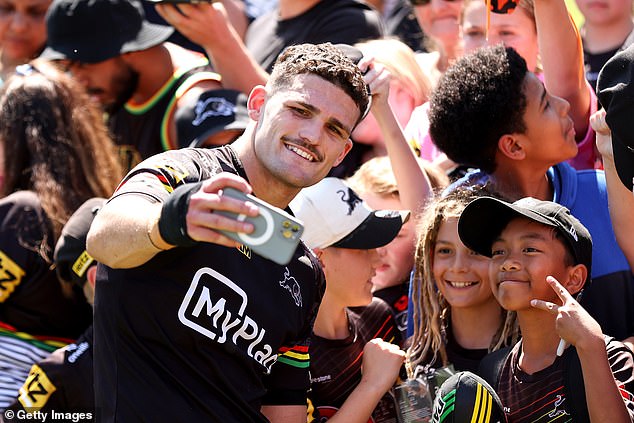An 18-page dynasty dossier from 2011, presenting lessons learned from an AFL and global sports powerhouse, is driving the most successful NRL club of this century.
First presented to Phil Gould, now Penrith rugby league chief executive Matt Cameron, 13 years ago, the ‘Project 2015′ document remains at the heart of the Panthers’ success to this day.
The AAP has been given exclusive access to the pages that made Penrith a giant, as they compete to become the first team in almost 60 years to win four consecutive premierships in Sunday’s grand final against Melbourne.
In essence, the plan outlined what should be in place at Penrith by 2015 to set the club up for success in the coming decade.
On its home page, it is presented as a “strategy to future-proof long-term athlete development and management pathways, with the goal of continued, sustained success.”
It also provided a plan around training structure, high performance, recruitment and retention along with centralized training for youth development.
Concerns are also raised around clubs moving in two- or three-year cycles without “thinking about the bigger picture”, and with the aim of remedying that.
They were words that woke up a sleeping giant, establishing a platform for success that would withstand everything rival clubs (and their recruiters) would throw at Penrith.
Nathan Cleary and the Penrith Panthers to contest a fifth consecutive NRL grand final
“It was about alignment,” Cameron told AAP.
“About getting the coaches in a room and, ‘Ivan, tell us what you’re looking for in a first-grader.'”
“So let’s break it down into sequential parts so the 16-year-old can train that and the 18-year-old can train that.”
After years of development, the idea first emerged from a conversation between Cameron and West Coast Eagles development manager Peter Worsfold in 2009.
“(Peter) said they had decided that every decision they made at the club would apply 10 years from now,” Cameron recalled.
“Let’s stop thinking about contract cycles and looking after ourselves and build a club from the inside out.”
Reform occurred quickly and Penrith adopted a long-term approach that went beyond the contract cycles of coaches and players.
The New South Wales Cup was brought back internally from Windsor, while the number of youth academies increased under the document’s plans for a “more rigorous internal scouting network within the Penrith district”.
The youth program was streamlined, with staff dedicated to routes and people like Lee Hopkins employed full-time as a strength and conditioning coach for youth.
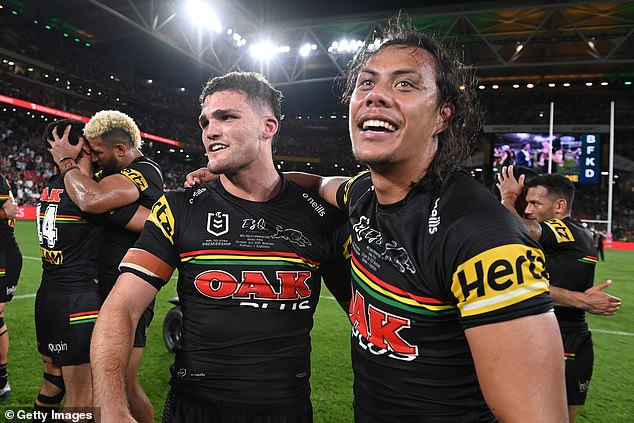
Success began in 2021 with Cleary and junior product Jarome Luai leading the Panthers to the first of their three consecutive grand finals.
An elite youth training plan was also created, with Jarome Luai among those in the first year.
“In the lead-up to that Project 2015 document, I think Penrith had forgotten who they were,” said Hopkins, who had worked part-time at Penrith since 2010.
‘As an organisation, we had forgotten that every time we had success it came through local kids who had come through our system.
“We had the biggest youth league in the world at our disposal and we just weren’t using it.”
Determined to make Penrith a club built on its own youth talent, programs were streamlined and regular meetings were held between NRL staff and those supervising youth.
“I used to tell people: if the NRL doesn’t do it, then we don’t do it,” Hopkins said.
‘Because it’s of no use.
‘Everything is staggered. Harold Matts (under 17s) gets 25 per cent of the NRL programme.
“(Under-19) SG Ball gets 50 per cent, Jersey Flegg (under-21) gets 75 per cent, NSW Cup gets 95 per cent and the NRL gets 100 per cent.”
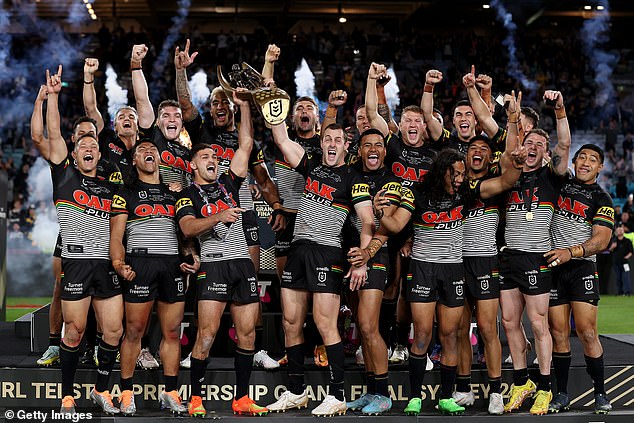
Established elite and junior programs meant the Panthers were able to remain the benchmark of the competition even as players left for other clubs.
Cameron and recruiting manager Jim Jones initially spearheaded the elite pathway space, with the dossier stating that Penrith “should be able to develop, identify and retain the best players within its district”.
Satellite sites were soon established at Dubbo, Forbes and Bathurst, after it became clear that Penrith was not making use of a potential gold mine.
Regional players were taught the same skills and structures as those from Penrith, being bussed on Friday nights for under 17s games before moving to district at a later age.
Former running back Ben Harden then took over the trails and is now Hopkins’ baby, with Jones’ son Sam also taking over identification and scouting.
“Everything was very simplified in what they used in first grade,” former under-18 coach Alex Chan said.
‘From work ethics to terminology.
‘You can see it now as the 18-year-olds make their NRL debut for Penrith. They have gone up a grade, but they never suffer trauma.
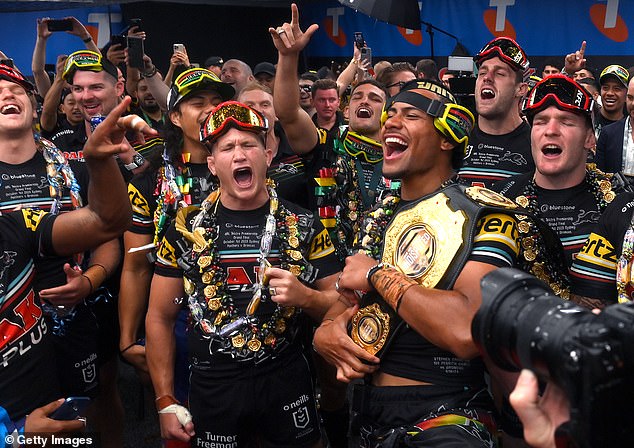
No matter how much the club’s depth has been tested, it has remained at the top of the NRL.
Recruiting at the top level also became a focus, with an eye toward models used in the NFL, as the club adopted a long-range slate magnet concept to balance front-line retention with space for rising talents.
It was along those lines that James Maloney and James Tamou were brought in, and then let go for the promotion of Luai and the young forwards.
“The 2015 project would see the development and implementation of a recruitment and retention model spanning the NRL, (under-20), NSW and (Queensland), Matts and Ball Cups,” the document said.
‘The model would be designed taking into account annual projections and would allow staff to visualize future teams with players contracted and selected.
“(It) would be based on methodologies used by some of the top NFL clubs.”
In 2014, the change had begun.
Penrith reached their first preliminary final in a decade with a team that included Isaah Yeo, Matt Moylan and Bryce Cartwright in their early years.
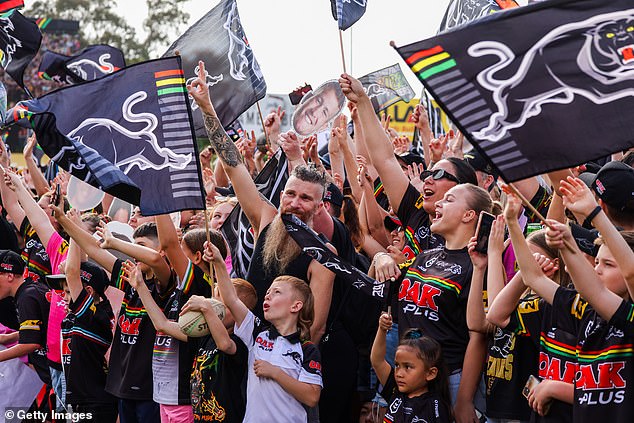
Fans hope the record will lead to even more success for the Panthers in the future.
The Panthers also won the NSW Cup, but more importantly, Luai, Nathan Cleary, Dylan Edwards and James Fisher-Harris were beginning to dominate the youth competitions.
And the likes of Stephen Crichton and Spencer Leniu were still to come as Penrith went from regular finalists to their first grand final in 2020.
“They won a lot of games in that Matts and Ball era, and when I was under-20 you really started to see the success of what could happen,” Hopkins said.
‘Everyone talks about skill sets, but learning to win is a skill set. Learning to win and do those things is a skill set. Those kids never really lost games.
By the time Sunday’s grand final rolls around, a whopping 14 of Penrith’s 18-man group will have played youth for the club.
“That document was moving in everything we did,” Hopkins said.
‘My current position is that I still do things that are in that document today. I still look at it.
‘We trust the system. Every individual participating in this organization trusts the system that was built in the Project 2015 document.
“If it hadn’t happened, I’m not sure where everything would be right now in this organization.”


